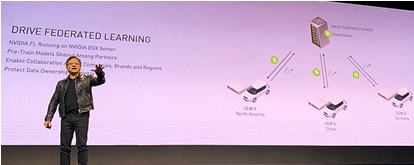Privacy protection becomes a vital issue to enterprises
Consumers and policymakers are increasingly putting more focus and effort into enhancing privacy. In 2018, the General Data Protection Regulation (GDPR) took effect in Europe and affected enterprises doing business in the European market. Under GDPR, enterprises need to be more cautious about data management, be it collecting, storing, utilizing, or transferring client data. In 2020, the California Consumer Privacy Act (CCPA) came into effect in the United States. With the CCPA, American citizens have the right to request enterprises to disclose the kind of data they possess and ask for the deletion of their data.
When people discuss artificial intelligence (AI), it needs sufficient data which includes personal data to train AI models. As data privacy and security a critical concern, it is likely to affect the development of AI application and the journey of digital transformation.
How could federated learning help?
In the latest NVIDIA GTC in China, the company announced the DRIVE federated learning for autonomous driving developers. Google introduced the idea of federated learning or collaborative learning in 2017. The key to federated learning is that the mechanism enables developers to train based on the shared models on their decentralized devices or servers with the local dataset. Therefore, although developers use the same model to train, there is no need to upload the data to the cloud or exchange data with other developers or research teams. Compared to traditional centralized machine learning techniques that require datasets to be in a single server, federated learning reduces concerns on data security and privacy by maintaining data in local servers.

For example, in GTC China, NVIDIA introduced federated learning on its autonomous driving platform. As there are different geographical landscapes and potential driving situations across regions, OEMs need to train their models individually with various driving datasets. The company’s DGX edge platform will be able to retrain the shared models in each OEM with local data. The local training results can be sent back to the federated learning server over a secure link to update the shared model. The practice could happen among different branches across regions or brands. However, cooperation among competitors may only be possible after addressing concerns on the origin of the shared model. Key players in the industry need to reach a consensus on the shared model to drive the retraining to optimize the model.
Adoption across sectors and other benefits
Apart from autonomous vehicles, a variety of sectors with data privacy concerns can implement federated learning techniques. For example, King’s College London and the American College of Radiology apply federated learning in medical imaging and radiology. Federated learning could potentially see increasing applications among pharmaceuticals, manufacturers, retailers, and telecommunications providers.
As federated learning can optimize AI applications’ results on devices, including mobile and IoT devices, the technique will affect end-users directly in the future. For example, Google applies federated learning to the Gboard, the Google Keyboard, on mobile devices. With an increasing amount of smart personal devices, federated learning will not only help to eliminate data security and privacy issues but also help customize the services to every end-user based on the locally collected data. As such, federated learning is anticipated to enhance personalized services and experience moving forward.



